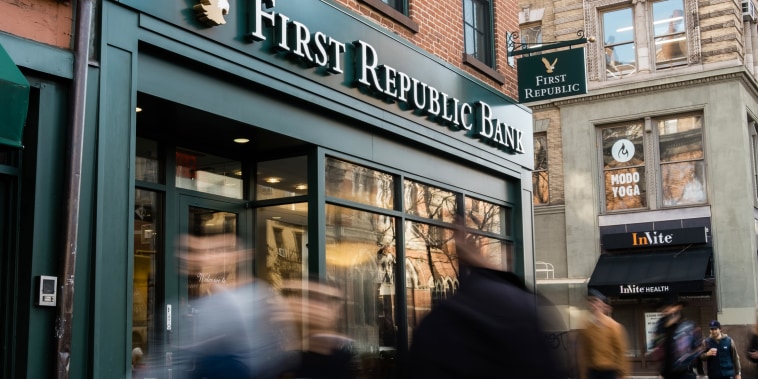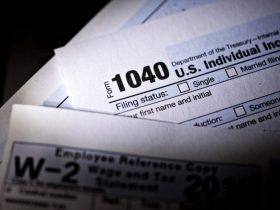First Republic Bank’s stock nearly halved in value Tuesday, a day after it reported an exodus of deposits in the first quarter.
Trading of First Republic shares was halted several times on the New York Stock Exchange on Tuesday. They ended the session at $8.10, down roughly 49%.
First Republic, based in San Francisco, reported Monday that it lost almost $72 billion in deposits from Dec. 31 to March 31. The drop of more than 40% drop despite a $30 billion infusion from 11 rival lenders on March 16 as the government and the private sector sought to head off a broader banking crisis.
While analysts say the exodus of deposits from regional and midsize banks has largely stopped, the latest troubles at First Republic show that broader industry concerns haven’t dissipated.
“Anecdotally, we hear that the volatility with deposits is not nearly the same as what it was” immediately after Silicon Valley Bank and Signature Bank imploded in March, said Mark Hamrick, a senior economic analyst at Bankrate, a consumer-finance data provider.
But some industry experts say signs of relative stability in recent bank earnings belie other concerns, particularly for commercial lending. Last week, Moody’s downgraded 11 regional banks, including U.S. Bank and Western Alliance, asking “whether some banks’ assumed high stability of deposits, and their operational nature, should be reevaluated.”
On First Republic’s earnings call Monday evening, CEO Mike Roffler sought to reassure investors that the worst bleeding was over. “Beginning the week of March 27, our deposits stabilized, and they have remained stable since that time,” he said.
First Republic’s deposit travails remain an outlier so far, with most banks reporting only modest outflows in recent weeks. Earnings reports for the latest quarter showed U.S. banks’ losing roughly 5% in deposits on average this year, according to a Goldman Sachs Research note Sunday.
“Most are now less concerned about future outflows,” Goldman said, although some banks warned that their industry isn’t completely out of the woods.
Some banks expect more deposits to come into their doors in the next few quarters, while others are signaling that funds could continue to go out. KeyCorp, one of the 20 largest U.S. banks, said it expects deposits to be flat or down by 2% over the course of 2023.
Expectations for further interest rate increases from the Federal Reserve, which is set to announce its next rate decision on May 3, continue to add to jitters on Wall Street.
A March 23 working paper from analysts affiliated with the National Bureau of Economic Research warned that smaller banks with uninsured deposits were more vulnerable to insolvency in a high-interest rate environment.
While some depositors who pulled money out of their banks may have done so amid fears linked to the SVB collapse, some regional lenders have said deposit outflows may also reflect consumers’ shopping for higher interest rates. That trend is increasingly pushing banks to pay more to hold on to their customers’ deposits and attract new ones.
Meanwhile, economists are monitoring the lending environment for small and midsize businesses for signs of a potential credit crunch. Small and regional banks are responsible for at least 70% of all commercial and industrial loans made to small firms, said Joe Brusuelas, the chief economist at the consulting firm RSM.
As access to credit among Main Street businesses contracts, he said, he worries that the flurry of layoffs announced by name-brand companies — cuts that so far have been tilted toward higher-paid workers in tech and finance — could creep further into other industries, such as leisure and hospitality.
“Tighter credit tends to cause the economy to slow and unemployment to rise,” Brusuelas said.








